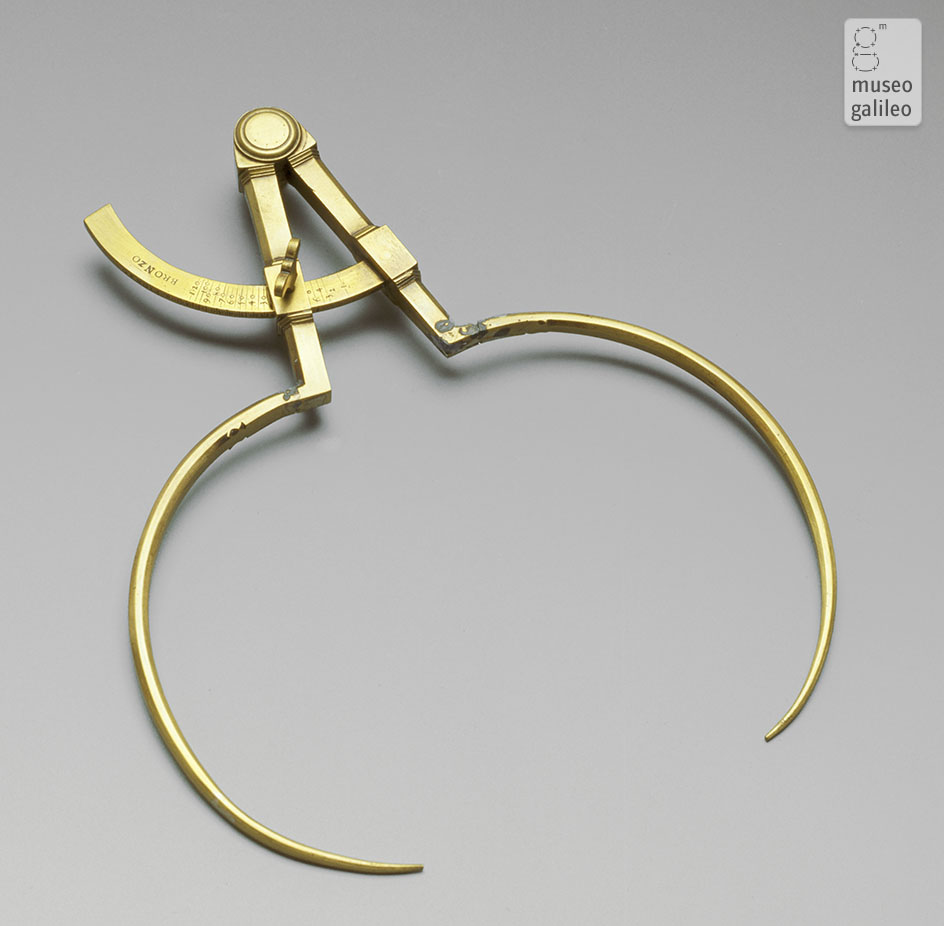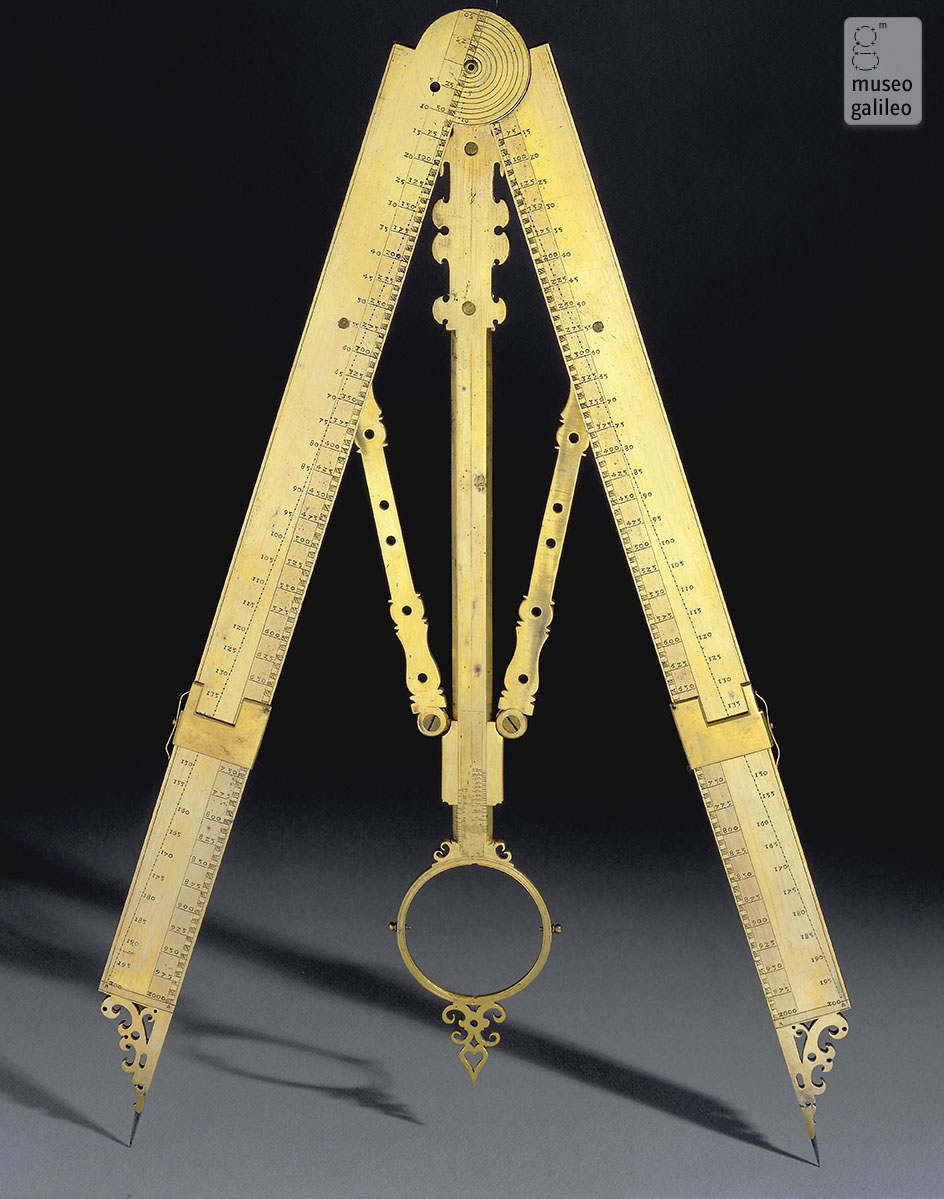"The term "compass" or "compasses" denotes a wide range of instruments for drawing, measurement, and proportional calculation. Besides the more common compasses for drawing circumferences, widespread since antiquity, the Renaissance has left us a great number of special compasses, whose names reflect their specific functions: oval compasses to draw ellipses, hyperbolas and parabolas; two-point compasses—also called dividers—to divide lines and transfer measurements; nautical compasses, to track routes on sea-charts; compasses with curved points, called gunner's compasses, to measure mouths of cannons, cannon balls, and columns; three-legged compasses to reproduce maps; four-point compasses, or reduction compasses, to enlarge or reduce drawings, divide lines and circumferences proportionally, and draw polygons; eight-point compasses to measure fractions of degrees and carry out proportional calculations; proportional compasses to perform arithmetic, geometric, and trigonometric calculations and to measure weights, gradients, and distances for military use; and sophisticated surveying compasses that combined a magnetic compass, a windrose, and optical sights for surveying and for drawing topographic maps."
-
Museo Galileo




No comments:
Post a Comment